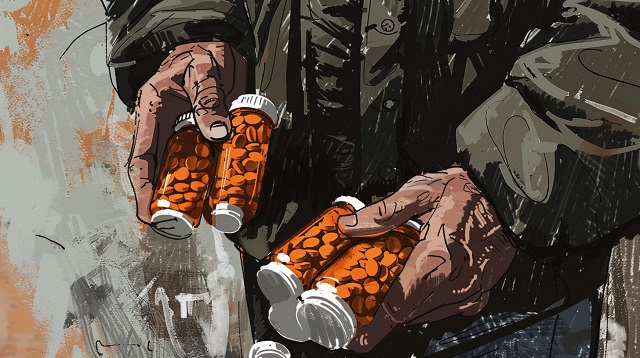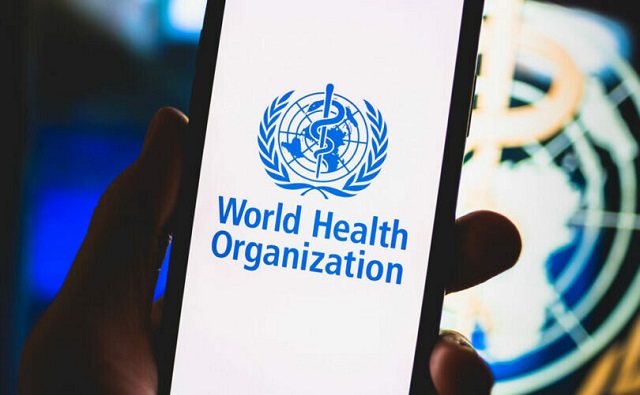National
Snowbird crash – Video shows pilot ejected.

A Canadian Forces Snowbird jet has crashed.
The #RCAF has been made aware that a Canadian Forces Snowbirds aircraft crashed in the vicinity of Kamloops, BC. Our priority at this time is determining the status of our personnel and supporting emergency personnel. When appropriate, more information will be made available.
— Royal Canadian Air Force (@RCAF_ARC) May 17, 2020
The following video on twitter account of Victor Kaisar appears to show two Snowbirds taking off in Kamloops, with one peeling off and either one or two ejections as the plane plummets.
Local media outlet CFJC Kamloops Today reports the snowbird crashed into a residential area known as Brocklehurst.
Here's a video that was sent to us at @RadioNLNews from earlier this morning. #Kamloops pic.twitter.com/hc61YWscmQ
— Victor Mario Kaisar (@supermario_47) May 17, 2020
Media
CBC tries to hide senior executive bonuses

From the Canadian Taxpayers Federation
Author: Franco Terrazzano
The Canadian Taxpayers Federation filed a complaint with the Office of the Information Commissioner after the CBC refused to disclose 2023 bonuses for its eight senior executives until days after its President Catherine Tait is scheduled to appear at a parliamentary committee.
“This reeks of the CBC trying to conceal its senior executive bonuses so Tait doesn’t have to talk about it when she testifies at a parliamentary committee,” said Franco Terrazzano, CTF Federal Director. “The CBC is required to follow access to information laws and this nonsense delay is a blatant breach of the law.
“If Tait and her executives think they deserve their bonuses, they should be open and honest about it with taxpayers.”
The CBC proactively discloses certain information related to executive compensation in its annual reports. However, because the annual report lumps together salary and other benefits, Canadians don’t know how much the CBC’s eight senior executives take in bonuses.
Other Crown corporations have provided the CTF with access-to-information records detailing senior executive bonuses. For example, the Canada Mortgage and Housing Corporation paid out $831,000 in bonuses to its 10 senior executives in 2023. The Bank of Canada paid out $3.5 million in bonuses to its executives in 2022.
On March 11, 2024, the CTF filed an access-to-information request seeking details on the compensation paid out to CBC’s eight senior executives in 2023, including bonuses.
On April 9, 2024, the CBC issued a 30-day extension notice.
The new deadline for the CBC to release details on senior executive bonuses is May 10, 2024, just days after Tait is scheduled to appear at committee on May 7, 2024.
In response to a previous access-to-information request, the CBC released to the CTF records showing it paid out $15 million in bonuses to 1,143 non-union staff in 2023. The CBC did not issue an extension notice on that request.
“Tait is wrong to hide the cost of bonuses for CBC’s eight senior executives from the Canadians who pay their cheques,” said Terrazzano. “Tait must do the right thing and confirm to the parliamentary committee that she will cancel CBC bonuses.”
The CTF filed the complaint with the Office of the Information Commissioner on May 3, 2024, regarding the CBC’s delay in releasing documents regarding senior executive bonuses.
“The CBC is legally obligated to release the bonus documents days after the parliamentary committee hearing so obviously Tait has the details readily at hand,” said Terrazzano. “If MPs ask for those details, she needs to answer.
“And just to be clear, the CTF is fine with the CBC releasing this information at committee or anywhere else.”
Addictions
Canada’s ‘safer supply’ patients are receiving staggering amounts of narcotics

Image courtesy of Midjourney.
|
|
How a Small Population Fuels a Black Market Epidemic, Echoing Troubling Parallels in Sweden
A significant amount of safer supply opioids are obviously being diverted to the black market, but some influential voices are vehemently downplaying this problem. They often claim that there are simply too few safer supply clients for diversion to be a real issue – but this argument is misleading because it glosses over the fact that these clients receive truly staggering amounts of narcotics relative to everyone else.
“Safer supply” refers to the practice of prescribing free recreational drugs as an alternative to potentially-tainted street substances. In Canada, that typically means distributing eight-mg tablets of hydromorphone, an opioid as potent as heroin, to mitigate the use of illicit fentanyl.
There is clear evidence that most safer supply clients regularly sell or trade almost all of their hydromorphone tablets for stronger illicit substances, and that this is flooding communities with the drug and fuelling new addictions and relapses. Just five years ago, the street price of an eight-mg hydromorphone tablet was around $20 in major Canadian cities – now they often go for as little as $1.
But advocates repeatedly emphasize that, even if such diversion is occurring, it must be a minor issue because there are only a few thousand safer supply clients in Canada. They believe that it is simply impossible for such a small population to have a meaningful impact on the overall black market for diverted pharmaceuticals, and that the sudden collapse of hydromorphone prices must have been caused by other factors.
This is an earnest belief – but an extremely ill-informed one.
It is difficult to analyze safer supply at the national level, as each province publishes different drug statistics that make interprovincial comparisons near-impossible. So, for the sake of clarity, let’s focus primarily on B.C., where the debate over safer supply has raged hottest.
According to a dashboard published by the British Columbia Centre for Disease Control, there were only 4,450 safer supply clients in the province in December 2023, of which 4,250 received opioids. In contrast, the 2018/19 British Columbia Controlled Prescription Drug Atlas (more recent data is unavailable) states that there were approximately 80,000 hydromorphone patients in the province that year – a number that is unlikely to have decreased significantly since then.
We can thus reasonably assume that safer supply clients represent around 5 per cent of the province’s total hydromorphone patients – but if so few people are on safer supply, how could they have a profound impact on the black market? The answer is simple: these clients receive astonishing sums of the drug, and divert at an unparalleled level, compared to everyone else.
Safer supply clients generally receive 4-8 eight-mg tablets per day at first, but almost all of them are quickly moved up to higher doses. In B.C., most patients are kept at 14 tablets (112-mg in total) per day, which is the maximum allowed by the province’s guidelines. For comparison, patients in Ontario can receive as many as 30 tablets a day (240-mg in total).
These are huge amounts.
The typical hydromorphone dose used to treat post-surgery pain in hospital settings is two-mg every 4-6 hours – or roughly 12-mg per day. So that means that safer supply clients can receive roughly 10-20 times the daily dose given to acute pain patients, depending on which province they’re located in. And while acute pain patients are tapered off hydromorphone after a few weeks, safer supply clients receive their tablets indefinitely.
Some chronic pain patients (i.e. people struggling with severe arthritis) are also prescribed hydromorphone – but, in most cases, their daily dose is 12-mg or less. The exception here is terminally ill cancer patients, who may receive up to around 100-mg of hydromorphone per day. However, this population is relatively small, so we once again have a situation where safer supply patients are, for the most part, receiving much more hydromorphone than their peers.
Not only do safer supply patients receive incredible amounts of the drug, they also seem to divert it at much higher rates – which is a frequently overlooked factor.
The clandestine nature of prescription drug diversion makes it near-impossible to measure, but a 2017 peer-reviewed study estimated that, in the United States, up to 3 per cent of all prescription opioids end up on the black market.
In contrast, it appears that safer supply patients divert 80-90 per cent of their hydromorphone.
These numbers should be taken with a grain of salt, as there have been no attempts to measure safer supply diversion – harm reduction researchers tend to simply ignore the problem, which means that we must rely on journalistic evidence that is necessarily anecdotal in nature. While this evidence has its limits, it can, at the very least, illustrate the rough scale of the problem.
For example, in London, Ontario, I interviewed six former drug users last summer who said that, of the safer supply clients they knew, 80 per cent sold almost all of their hydromorphone – just one interviewee placed the number closer to 50 per cent. More recently, I interviewed an addiction outreach worker in Ottawa who estimated that 90 per cent of safer supply clients diverted their drugs. These numbers are consistent with the testimony of dozens of addiction physicians who have said that safer supply diversion is ubiquitous.
Let us take a conservative estimate and imagine that only 30 per cent of safer supply hydromorphone is diverted – even this would be potentially catastrophic.
So we can see why any serious attempt to discuss safer supply diversion cannot narrowly focus on patient numbers – to ignore differences in doses and diversion rates is inexcusably misleading.
But we don’t need to rely on theory to make this point, because the recent parliamentary testimony of Fiona Wilson, who is deputy chief of the Vancouver Police Department and president of the B.C. Association of Chiefs of Police (BCACP), illustrates the situation quite neatly.
Wilson testified to the House of Commons health committee earlier this month that half of the hydromorphone recently seized in B.C. can be attributed to safer supply. As she did not specify whether the other half was attributed to other sources, or simply of indeterminate origin, the actual rate of safer supply hydromorphone seizures may actually be even higher.
As, once again, safer supply clients constitute roughly 5 per cent of the total hydromorphone patient population, Wilson’s testimony suggests that, on a per capita basis, safer supply patients divert at least 18 times more of the drug than everyone else.
This is exactly what one would expect to find given our earlier analysis, and these facts, by themselves, repudiate the argument that safer supply diversion is insignificant. When a small population is at least doubling the street supply of a dangerous pharmaceutical opioid, this is a problem.
The fact that so few people can cause substantial, system-wide harm is not unprecedented. In fact, this exact same problem was observed in Sweden, which, from 1965-1967, experimented with a model of safer supply that closely resembled what is being done in Canada today. A small number of patients – barely more than a hundred – were given near-unlimited access to free recreational drugs under the assumption that this would keep them “safe.”
But these patients simply sold the bulk of their drugs, which caused addiction and crime rates to skyrocket across Stockholm. Commentators at the time referred to safer supply as “the worst scandal in Swedish medical history,” and, even today, the experiment remains a cautionary tale among the country’s drug researchers.
It is simply wrong to say that there are too few safer supply clients to cause a diversion crisis. People who make this claim are ignorant of contemporary and historical facts, and those who wish to position themselves as drug experts should be mindful of this, lest they mislead the public about a destructive drug crisis.
This article was originally published in The Bureau, a Canadian publication devoted to using investigative journalism to tackle corruption and foreign influence campaigns. You can find this article on their website here.
-

 conflict2 days ago
conflict2 days agoOver 200 Days Into War, Family Of American Hostage in Gaza Strives For Deal To Bring Son Home
-

 Brownstone Institute1 day ago
Brownstone Institute1 day agoThe Predictable Wastes of Covid Relief
-

 Brownstone Institute2 days ago
Brownstone Institute2 days agoBook Burning Goes Digital
-

 Alberta22 hours ago
Alberta22 hours agoGame changer: Trans Mountain pipeline expansion complete and starting to flow Canada’s oil to the world
-

 Addictions22 hours ago
Addictions22 hours agoCanada’s ‘safer supply’ patients are receiving staggering amounts of narcotics
-

 Community19 hours ago
Community19 hours agoLast Day: What would you do with $20,000 Early Bird Prize?
-

 Bruce Dowbiggin18 hours ago
Bruce Dowbiggin18 hours agoDo It Once, Shame On You; Do It Twice, Shame On Me
-

 conflict17 hours ago
conflict17 hours agoImmigration Experts Warn Possible Biden Plan To Import Gazan Refugees Would Be ‘National Security Disaster’









